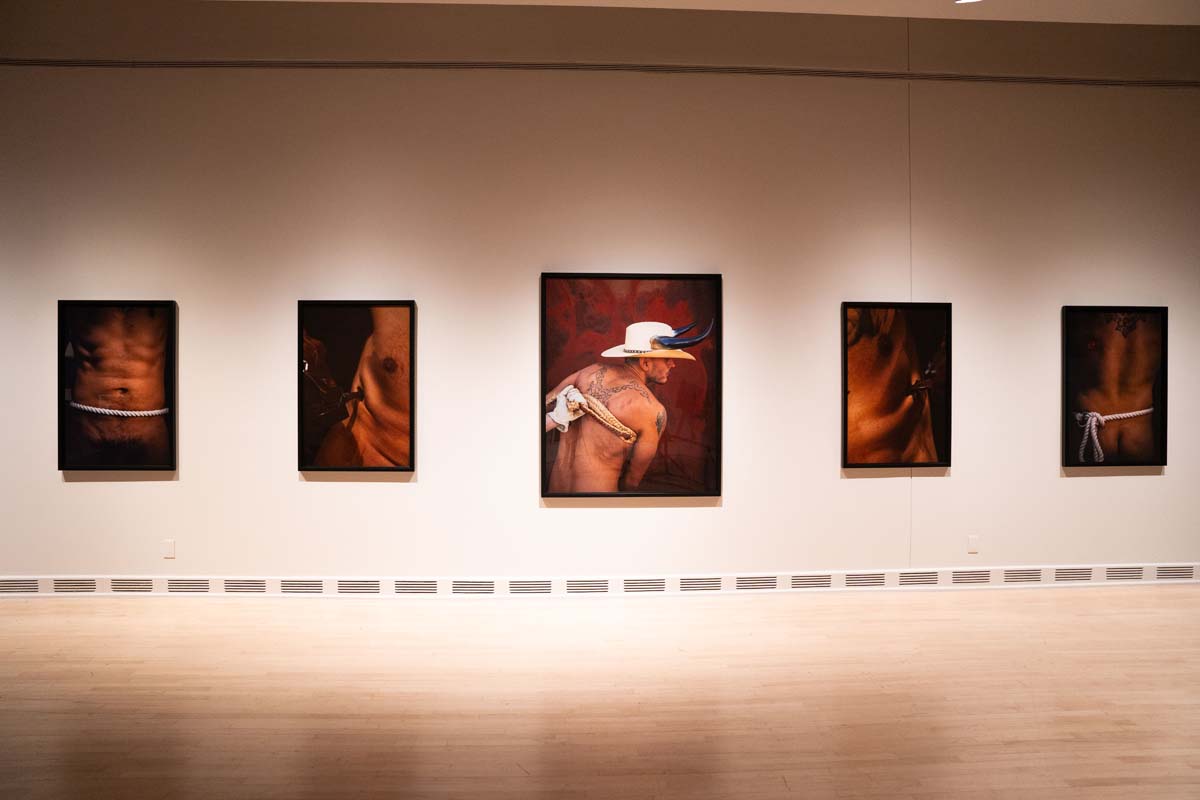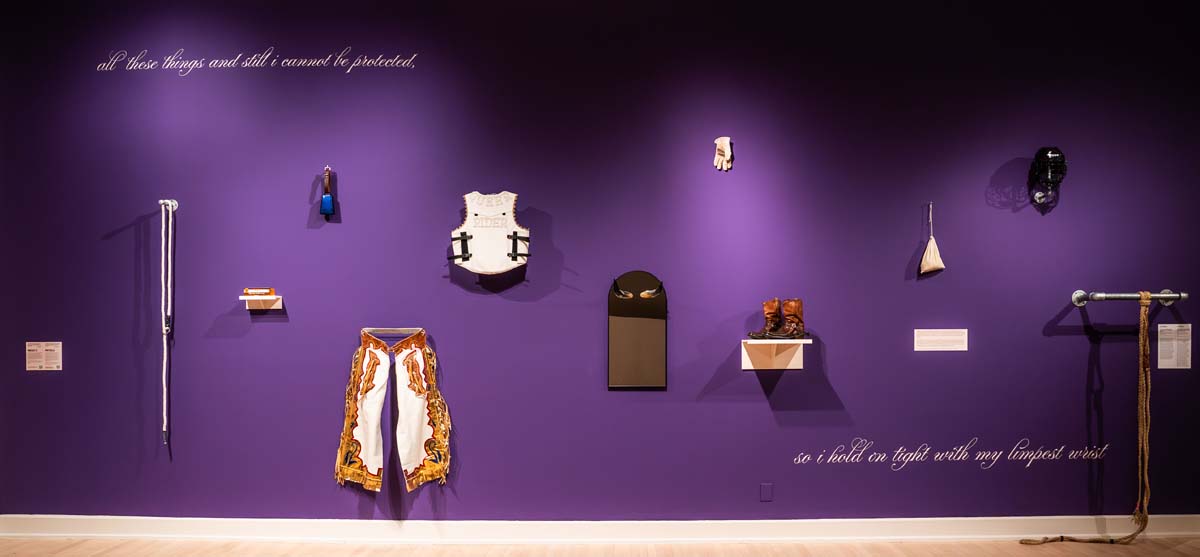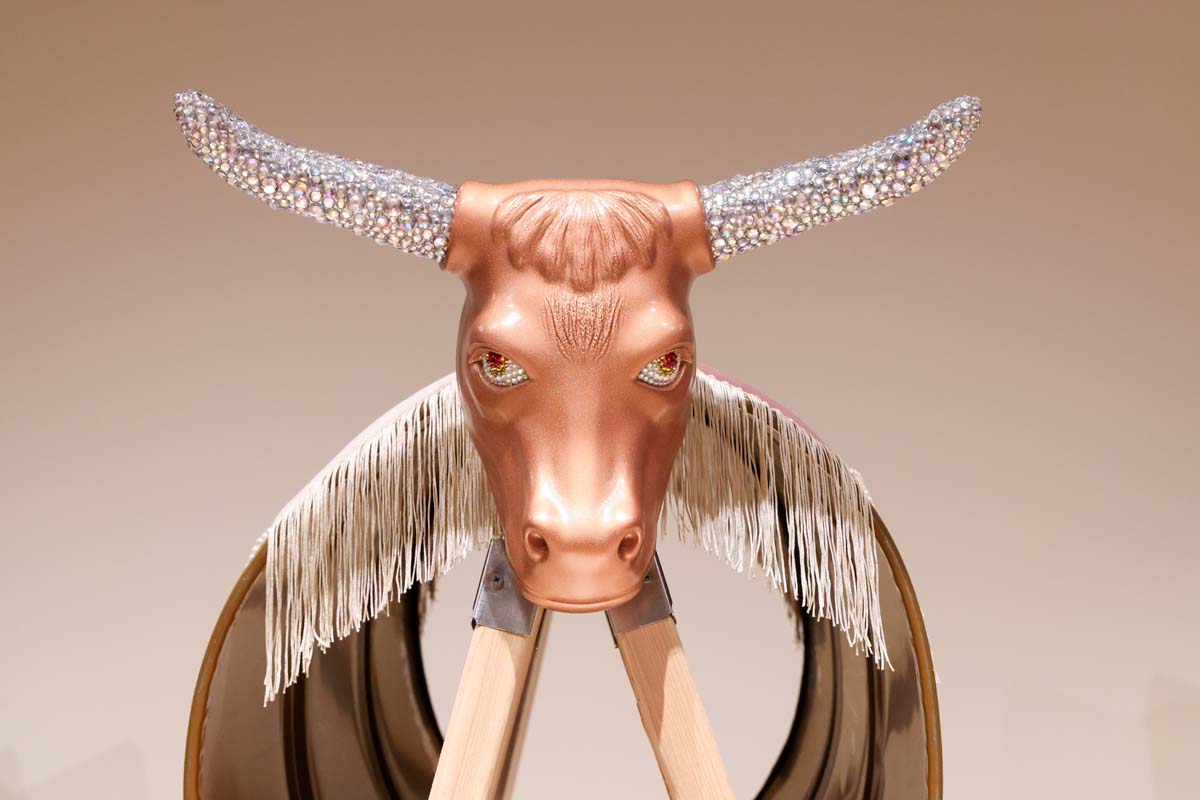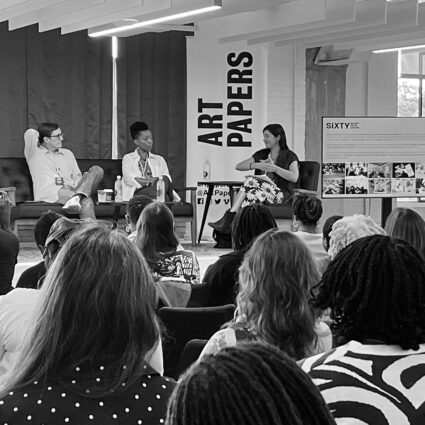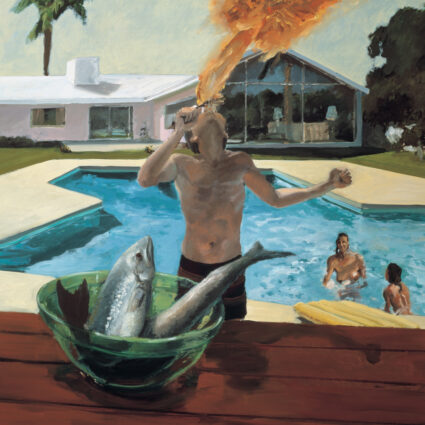José Villalobos: Rough Rider at Arizona State University queers the traditional masculinity inherent in cowboy culture’s objects of desire.
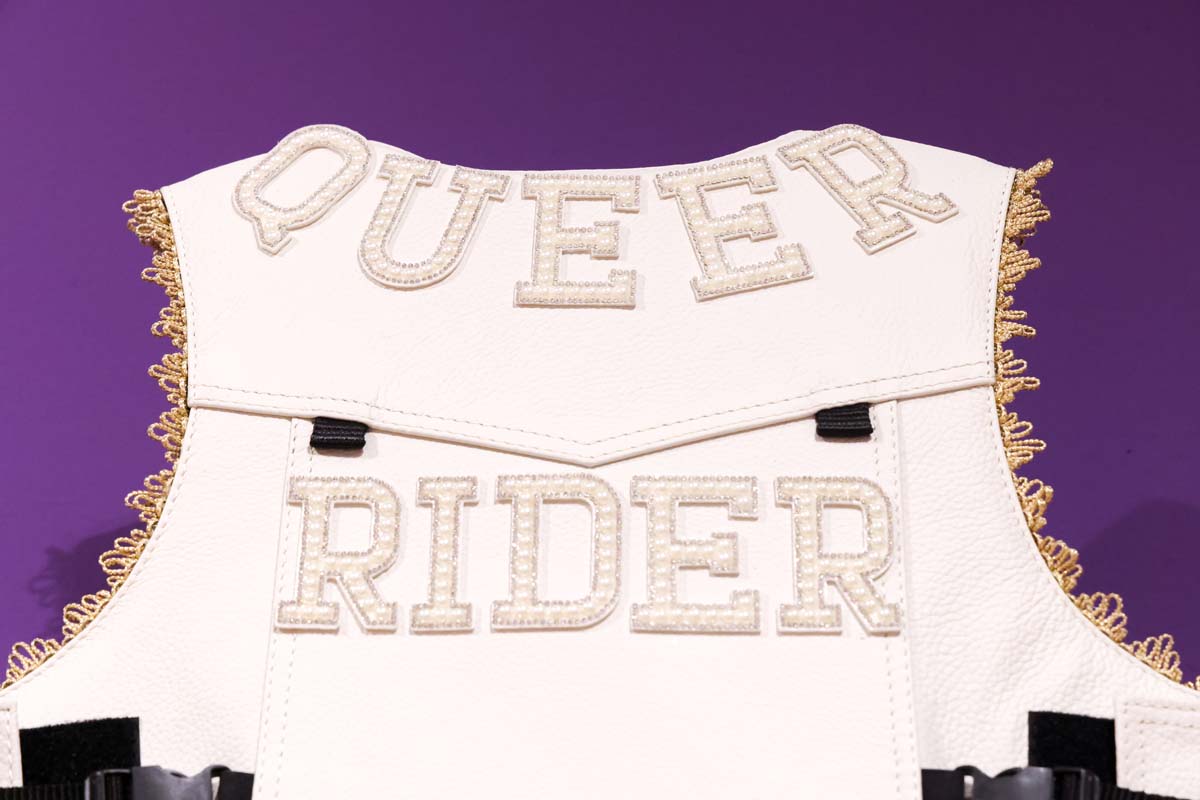
José Villalobos: Rough Rider
February 22 – July 20, 2025
Arizona State University Art Museum, Tempe
José Villalobos is queer multi-media artist who grew up on the border between El Paso, Texas, and Ciudad Juárez, Mexico, immersed in Norteño culture and his conservative Mexican family’s values. His work repeatedly references the machismo of Norteño culture, in order to subvert it. His shows often include performances, in which he utilizes the traditional visual language, objects, and clothing of cowboy and bull-riding’s hyper-masculine culture, in order to critique and challenge gender roles and expectations. Such is the focus of his first U.S. museum exhibition, at Arizona State University Art Museum: José Villalobos: Rough Rider. In concentrating on the effects of bull-riding culture and Brown queer identity, however, the exhibition offers only a glimpse into the concerns of Villalobos’s broader practice.
In his 2024 exhibition Diseñando Masculinidades/Designing Masculinity, conceived during a residency at the Joan Mitchell Center in 2022 and realized during his ArtYard residency in Frenchtown, New Jersey, Villalobos re-conceptualized “cowboy” clothing—boots, boot shafts, shirts, leather vests, and silver buckles that historically symbolize masculinity and power among Norteño men—with intricate embroidery and patterns that firmly queer the items with flamboyant flair. The show was a clear precursor to his current exhibition at ASU.
In his 2023 exhibition at Big Medium in Austin, Texas, Fuertes y Firmas, however, his performance works and mixed-media installations included agricultural implements, soil, and barbed wire to bring attention to the 4.6 million Mexican laborers granted temporary U.S. work permits in the wake of World War II. Also on view were a cowboy hat hung from the ceiling, a photo of Villalobos wearing a cowboy hat on fire, a video of Villalobos wearing the hat veiled in white billowing mesh, and a black-and-white photograph of three large vertebrae chained to the artist’s back—also precursors to the work in Rough Rider, but far more powerful.
An exceptionally resonant series of work on view here, however, are the color photographs of Villalobos’s naked back and torso bound with rope, which are haunting at a time when the U.S. government is treating immigrants and other Brown bodies as subhuman or even animal—arresting, caging, and imprisoning them without due process. The exhibition didactics, however, ask viewers to equate the images with the bulls that are roped and ridden. In light of ongoing research on animal sentience, and the ways in which anyone other than white males continue to be othered, it’s a resonant point that deserves further development, which doesn’t occur here.
The color photographs of Villalobos’s naked back and torso bound with rope are haunting at a time when the U.S. government is treating immigrants and other Brown bodies as subhuman or even animal.
Other didactics, written by Villalobos and senior curator Alana Hernandez, with Windgate curatorial fellow Sade Moore, ask us to consider questions of invisibility and “the spectacle of rodeo culture, addressing themes related to machismo, protection, and gender.” What is displayed is a wall with a leather vest reading “Queer Rider” on the back in jeweled letters; chaps adorned with gold, red, and blue fringe; rope; glycerin soap; worn gloves; and other items used by Villalobos in a video on the opposite wall.
In the video, through fractured jump cuts, he prepares his rope for bull riding, pulling and rubbing the rope with a sensuality of tenderness and strength that, frankly, exudes an erotic charge (think: hand job). Between the walls are drop barrels (used for bull-riding practice) covered in pink faux fur, or purple velvet with gold brocade and jeweled horns, or embellished with tassels, beads, glitter, pearls, and fringe.
Other recent exhibitions, including these reviewed in Southwest Contemporary, have deconstructed cowboy culture and its clichéd narratives. The objects displayed in Rough Rider do queer the traditional masculinity inherent in cowboy culture’s objects of desire. But Villalobos’s greater body of work delves into a broader array of topics pertinent to queer identity and the treatment of Brown bodies.
A tiny exhibition in a small space, Rough Rider introduces a portion of the artist’s concerns to new audiences, but misses the opportunity to engage viewers in a wider array or deeper investigation of the issues in which the artist has demonstrated he is fully engaged.
